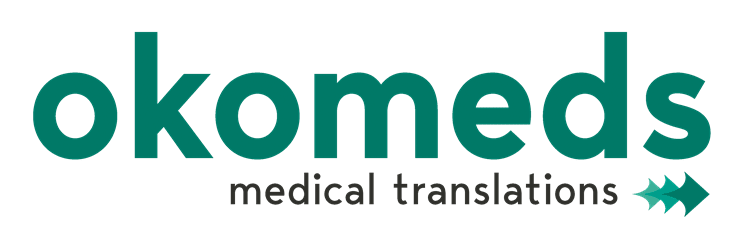
25 Jul How to localise digital health content
Digital transformation is redefining the way patients interact with healthcare – from managing appointments and accessing test results to receiving diagnoses and following treatment plans. And in this new landscape, language is more than just a communication tool: it is about inclusion, equity and safety. This is why it is necessary to localise digital health content to ensure meaningful access for all patients.
It may not seem like it, but the reality is stark: patients with limited command of a dominant language are more likely to experience adverse health outcomes. For digital health to truly transform healthcare and close gaps (rather than widen them) language must be central to the conversation. That is why in this article we tell you why it is necessary to localise digital health content and how to do it.
Why should you localise digital health content?
As digital health platforms – apps, portals, wearables and EHR systems – evolve, so does the responsibility to ensure that everyone, regardless of the language they speak, can benefit from them. Effective localisation of these tools helps remove communication barriers that can lead to misdiagnosis, medication errors or lack of access to essential care. These are the reasons digital health content should be localised:
Universal language access
Language directly impacts health outcomes. Patients with limited proficiency face higher risks of misdiagnosis and treatment errors. Yet, language access is often overlooked in digital health. To close this equity gap, it is essential to localise digital health content and make platforms understandable and accessible to all users, regardless of language.
Current multilingual context
Multilingual support is no longer optional, it is essential. Inaccurate translations can lead to life-threatening consequences. Healthcare providers must work with expert translators to ensure that all digital content is precise, culturally relevant and compliant. To truly serve a global audience, it is critical to localise digital health content with a high standard of quality.
Digital changes
The pandemic triggered a digital health boom, but also highlighted the urgent need for scalable translation services. As tech like telemedicine, AI diagnostics and wearables expand, healthcare providers must localise digital health content across languages, interfaces and platforms to ensure global accessibility and patient safety.
New translation trends
Translation tech is evolving rapidly — AI and machine translation offer speed and cost benefits. But in healthcare, where accuracy is vital, human expertise is irreplaceable. To balance efficiency with precision, providers should combine technology with professional linguists to effectively localise digital health content while maintaining quality and compliance.
How should you localise digital health content?
Translation is more than a linguistic tool in healthcare; it is a bridge to understanding, empathy and equity. In digital environments, where users rely on interfaces to make critical health decisions, clear and culturally attuned communication can be the difference between confidence and confusion.
Here are the key practices shaping truly inclusive digital health platforms:
Localisation beyond language
Effective digital health content does not stop at word-for-word translation. It requires cultural adaptation — adjusting terms, formats, references and structures to align with local norms and expectations. From date formats to health beliefs, context is everything. True localisation ensures your message resonates, builds trust and respects cultural nuances and regulations.
Accessible & multilingual interfaces
Healthcare does not speak just one language — and neither should your platform. Offering multilingual options improves patient outcomes and broadens your reach. At the same time, accessibility must go beyond language: design with disabilities in mind by integrating alt text, captions, legible typography and inclusive colour schemes.
Plain language content
Medical information should inform, not overwhelm. Using clear, jargon-free language empowers patients to make informed decisions and improves retention and engagement. Clarity is not a compromise — it is a commitment to health literacy.
Regulatory compliance & data protection
Translation and localisation efforts must align with local and international regulations like HIPAA, GDPR or ISO 13485. When handling personal health data, privacy, encryption and transparency are non-negotiable. Localisation strategies must be embedded within secure, compliant systems from the start.
Know your audience
Health literacy levels vary widely. Whether your users are patients, caregivers or professionals, your content must be tailored to their knowledge, cultural context and emotional state. Audience profiling and segmentation are key to delivering relevant, actionable communication.
Cultural sensitivity & awareness
Health can be a sensitive topic. Certain conditions may carry stigma or taboos in different communities. Culturally intelligent content avoids alienating users — instead, it builds rapport through empathy, understanding and care in both tone and terminology.
Collaboration with experts
Medical translation is not a solo effort. It requires interdisciplinary collaboration between linguists, medical professionals, UX designers and compliance officers. This synergy ensures messaging is not only accurate, but also ethical and effective.
Localising digital health content: an essential issue
A digital health solution might be ready to change lives — maybe even save them. But if users cannot fully understand or trust it, none of that potential will matter.
At Okomeds, we go beyond translation. We adapt health software — from UI to support content, from wearable integration to marketing assets — to fit your target market, comply with local regulations and connect with users in their own language and context.
Whether your platform is built for mobile, wearables or desktop, and whether you are working with big data or connected devices, we ensure your content is ready to perform globally and trusted locally.
The future of care is digital. Our job is to make sure it is understood by everyone.






Sorry, the comment form is closed at this time.